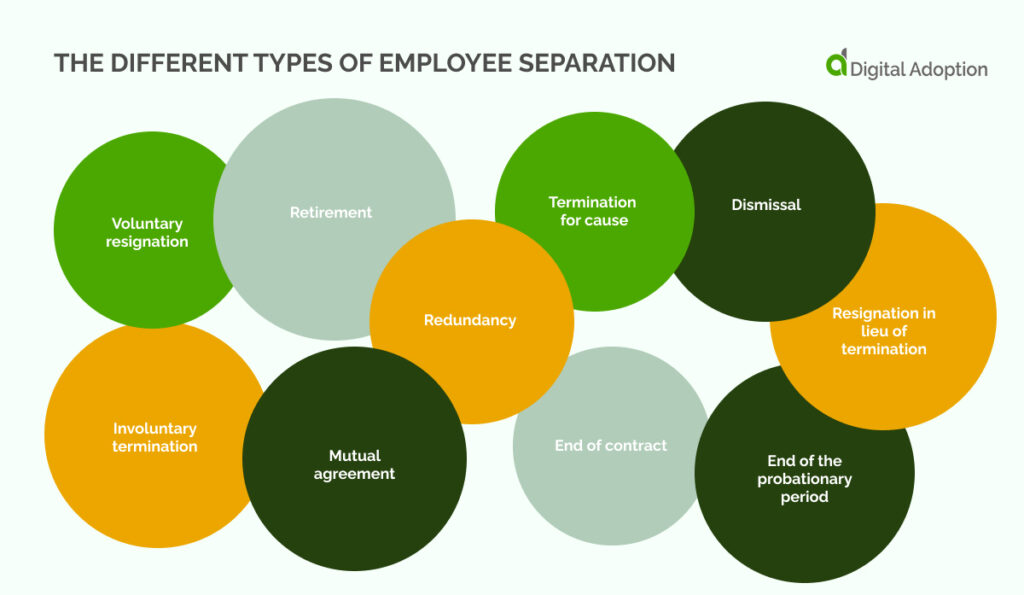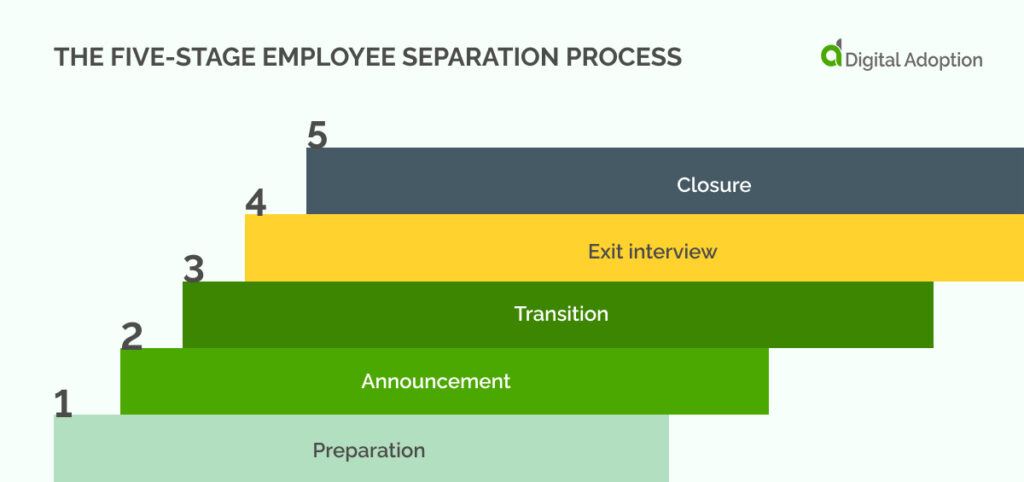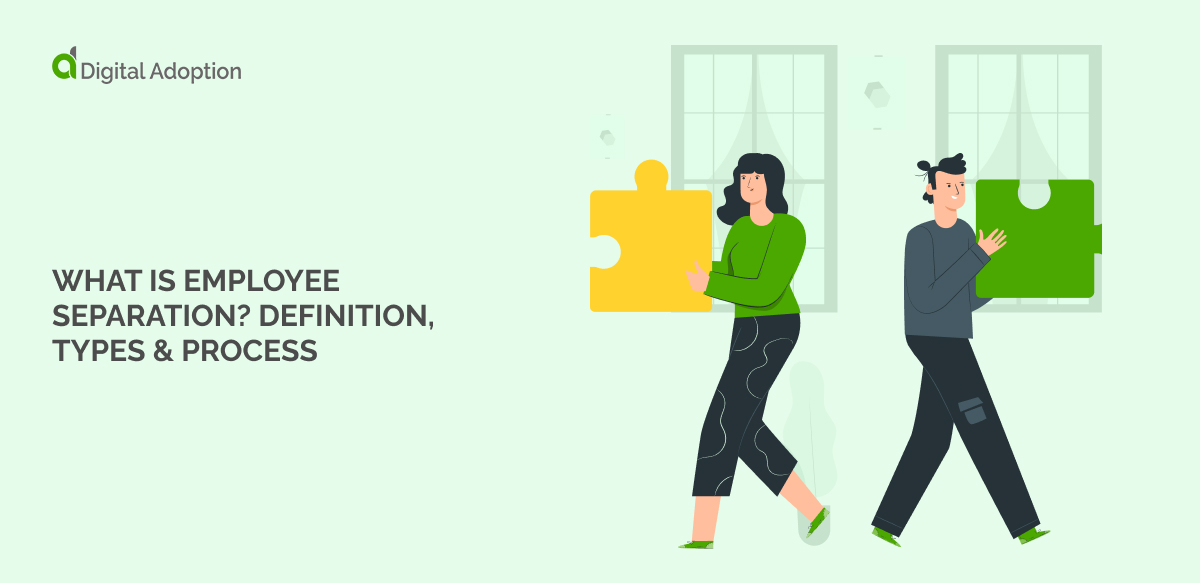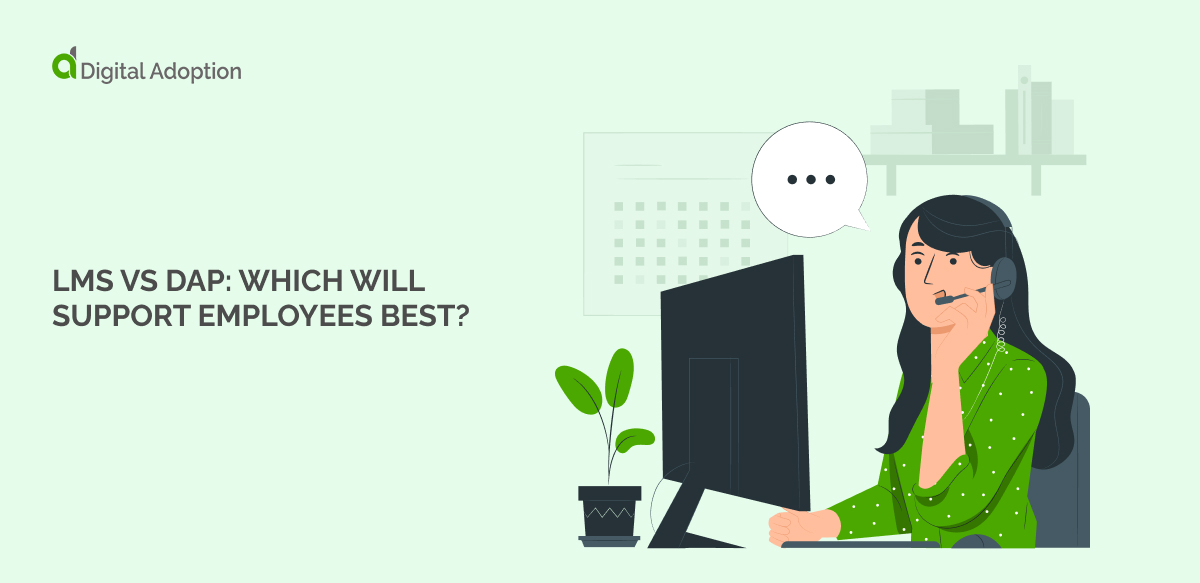From productivity to morale, employee separation can majorly disrupt an organization. According to the Bureau of Labor Statistics, the average U.S. turnover rate is nearly 50%.
This trend underscores the importance of effective people processes. After all, employees are the lifeblood of any organization, and how they’re managed – from recruitment to retention and transitions – reflects company culture and impacts organizational agility.
Companies need to handle employees leaving in a well-organized way. This means talking openly, having a clear process for the employee to exit, and ensuring the company keeps any important knowledge the employee has.
Streamlining separation simplifies the process, improving the employee experience and easing the transition for both the departing employee and the remaining team.
This article explains all about employee separation. It covers why it’s important, the different ways it can happen, and the steps involved. It also gives tips on how to handle these situations well.
What is employee separation?
Employee separation occurs when a person stops working for a company. This can happen in different ways. The employee might choose to leave, the company might fire them, they might retire, or both the employee and the company might agree it’s time to part ways.
Companies need to understand how employee separation works. This helps them make sure everything goes smoothly and that they follow the law. It means talking to the employee, having a plan for their leaving, and making sure any important knowledge they have is passed on.
Employee separation can even be incorporated into a risk management framework to mitigate potential disruptions and liabilities.
It also helps other employees feel better and strengthens the company’s reputation.
Why is understanding employee separation important?
Companies need to understand how to handle employees leaving. This helps them stay flexible and keep a positive work environment. It lets companies change with their workers, deal with performance problems quickly, and use their people and money wisely.
When companies handle employees leaving well, it shows they care about fairness and their workers. This makes them a more attractive place to work. Smooth transitions cause less disruption, lower legal risks, and keep other employees happy.
Knowing why managing employees leaving is important helps companies prepare for change. They can have plans for who takes over important jobs and make sure valuable knowledge is shared.
Overall, understanding and handling employee separation well shows a company is professional, fair, and built to last.
What are the different types of employee separation?

According to the Work Institutes’ Retention Report, a significant number of new hires leave quickly. Research shows that 37.9% exit their organization within the first year, with two-thirds departing within the first six months.
Knowing why employees leave is important for companies. There are different reasons, like some employees choosing to quit, some getting fired, others retiring, and sometimes both the company and employee agree it’s time to part ways.
Understanding these reasons helps companies plan when employees leave so work keeps getting done smoothly.
Let’s explore:
Voluntary resignation
When employees quit, they decide to stop working for the company. This can be for personal reasons, like wanting a new job or moving away, or because they’re not happy with their current work. Usually, when someone quits, they tell their boss beforehand. This allows the company to find someone new to take over their tasks.
What to do when someone quits: The best thing to do is have an exit interview with the employee. This helps you understand why they’re leaving and what their experience at the company was like. You should also make a plan for a smooth changeover. This means ensuring someone else knows how to do their job and that the company is told about them leaving.
Involuntary termination
Sometimes, a company decides to fire an employee. This might happen if the company needs fewer workers if the employee isn’t doing a good job, or if the company is having money problems. This is different from quitting because the company makes the decision, and it has to follow special rules and agreements.
What to do when firing someone: It’s important to fire people in a kind and professional way. Follow the steps you’ve already set up for dealing with problems, and make sure you’re following the law. Tell the employee clearly why they’re being fired, offer help finding a new job, and let them and other employees know respectfully.
Retirement
Retirement means an employee chooses to stop working after they reach a certain age or work for a certain amount of time. It’s the end of a long career and the start of a new part of their life. Companies often provide retirement benefits, like pensions or special savings accounts, to help employees have money after they stop working.
What to do when someone retires: The best thing to do is celebrate the employee and all their hard work for the company. Throw a party or give them a special gift to show how much you appreciate them. Also, help them understand their retirement benefits and healthcare options so they can feel confident and secure in this big life change.
Mutual agreement
Sometimes, both the company and the worker agree it’s time for the worker to leave. They talk about it and make a deal about how the worker will stop working. This could include the company paying the workers to retire early, offering a package to help them leave, or agreeing to settle disagreements.
What to do in this case: The most important thing is for the company and worker to talk openly and work together to find a solution that works for both of them. Work with the employee to write down all the details of how they’ll leave, including any money, benefits, or promises not to share company secrets. Ensure everyone knows what to do after the employee is gone. This helps things go smoothly and keeps a good relationship between the company and the former employee.
Redundancy
Sometimes, a company needs to eliminate jobs. This might happen because of new technology, changes in how the company is organized, or changes in what customers want. When this happens, it’s called redundancy. This means that some people will lose their jobs. Companies usually talk to these employees, try to find them other jobs, and give them some money to help them transition.
The best way to handle redundancy is to be honest and kind when telling employees about the changes. Explain clearly why jobs are being cut, what help is available, and if there are any ways they might be able to stay with the company in a different role. Choose who loses their jobs fairly and listen to employees’ feedback. Offer money and help to find a new job to make this difficult time a little easier.
Termination for cause
Sometimes, a company has to fire someone immediately. This happens when the employee does something wrong, breaks important company rules, or acts harmfully. The company has to look carefully at what happened to be sure it’s making the right decision and following rules to make it fair.
What to do in this case: Follow the company’s rules for handling bad behavior and the law. This helps protect the company from being sued. Carefully investigate what happened and be fair to the employee. Explain the decision to fire them clearly and respectfully. Offer help with finding a new job to make the change a little easier.
End of contract
Occasionally, people are only hired to work for a company for a set amount of time. This is called a contract. When the contract ends, the person stops working there. Sometimes, the company might offer them a new contract or a permanent job.
What to do when a contract ends: Look at how well the person did their job and whether the company still needs someone in that role. If the contract can’t be extended, let the employee know beforehand (as agreed). Help them hand over their work to someone else and offer to write a good reference for when they look for a new job.
Dismissal
Occasionally, a company might fire employees because they’re not doing their job well enough. This happens even after the company has tried to help them improve. The decision is based on how well they’ve been doing their work, and the company will usually have a process with warnings and chances to get better.
What to do in this case: The best thing to do is give the employees honest feedback and help them improve. Track the problems with their work and follow the company’s steps for what to do when someone isn’t doing a good job. Let them know they’re being fired clearly and professionally. Offer help finding a new job or improving their skills.
Resignation in lieu of termination
Sometimes, employees know they are about to be fired, so they quit instead. This lets them leave on their terms and might help them keep a good reputation or get a better deal from the company.
What to do in this case: Talk to the employee to understand why they are quitting and see if there are any problems you can fix. Figure out how their leaving will affect the company and make a plan to keep things running smoothly. Be professional and keep their information private. Offer support to help the employee find a new job.
End of the probationary period
When new employees start, they often have a “probationary period.” This is when the company can see how well they are doing and whether their performance fits its goals. If the employee isn’t doing a good enough job, their job could end. But if they’re doing well, they’ll get to keep their job.
What to do at the end of this period: Look carefully at how the employee has done and compare it to what was expected. Give them honest feedback about how to improve and help them get better. Decide fairly whether or not to keep them based on how they did during this trial period.
What are the reasons for employee separation?
Now that we understand the different types of employee separation, it’s important to gauge why employees might want to leave.
In doing so, organizations can proactively address underlying issues, implement targeted retention strategies, and foster a supportive work environment conducive to employee satisfaction and longevity.
Let’s explore:
Career advancement
Employees seek better career prospects encompassing higher salaries, challenging roles, or avenues for professional growth. They aim to capitalize on opportunities offering elevated positions, increased responsibilities, and prospects for employee development. Transitioning to roles aligning more closely with their career aspirations motivates employees to explore external opportunities, fostering career progression.
Workplace dissatisfaction
Sometimes, employees become unhappy because their jobs don’t fit them well, their workplace is difficult, or they don’t agree with how the company does things. They might feel like their work isn’t valued, they don’t get to use their skills, or their bosses aren’t helpful. To fix this unhappiness, companies need to look at what employees expect and what the job is like. They need to make changes so the two match better.
Personal reasons
Employees depart due to personal obligations like familial responsibilities, health concerns, or geographical relocations. Their decisions stem from prioritizing domestic well-being, managing health-related issues, or adapting to changes necessitating relocation. Balancing personal commitments with professional obligations entails accommodating individual circumstances within the organizational framework and encouraging employee assistance programs conducive to emotional well-being.
Performance issues
Employees face involuntary separation owing to sustained underperformance, failure to meet job requirements, or inability to adapt to evolving organizational demands. Employers cite performance deficiencies, discrepancies between expected outcomes and delivered results, or recurrent errors warranting corrective action. Mitigating performance-related challenges necessitates proactive measures, including performance feedback, training interventions, or role realignment to align employee capabilities with organizational expectations.
Organizational changes
Workforce restructuring, mergers, or downsizing initiatives prompt employee separation, driven by strategic realignments, operational optimizations, or financial imperatives. Organizational transformations necessitate rationalizing workforce structures, streamlining processes, or optimizing resource allocations to bolster organizational resilience. Adapting to dynamic market conditions entails recalibrating workforce configurations and ensuring alignment with strategic objectives and market imperatives.
The five-stage employee separation process

Understanding the employee separation process is crucial for organizations to ensure smooth transitions, maintain positive employer-employee relations, mitigate legal risks, and gain valuable insights for improvement.
- Preparation
The preparation stage involves meticulous planning to orchestrate a seamless transition. It encompasses coordinating with relevant stakeholders to ensure all necessary documentation and administrative tasks are completed accurately and efficiently.
Preparations may involve arranging to redistribute the departing employee’s workload, identifying suitable replacements or interim solutions, and assessing potential impacts on team dynamics and project timelines. Meticulous preparation for the employee’s departure enables organizations to mitigate disruptions and maintain operational continuity during the transition period.
- Announcement
Once an employee leaves, it’s important to let everyone in the company know clearly and honestly. This helps make sure everyone understands the change that’s happening.
The announcement can be made in different ways, like through emails, meetings, or company-wide announcements.
It might include why the person is leaving and any important details about how their work will be handled. Letting everyone know quickly helps avoid confusion and keeps team spirit strong.
- Transition
The next step is ensuring the person leaving can pass on everything they know to whoever takes over their work. This might mean writing down instructions, training the new person, or making it easy for them to ask questions.
Employees leaving might be asked to write a special document with all the important information about their job. This includes what they were working on, who they worked with, and other details. By carefully sharing knowledge and hand-off tasks, the company can keep things running smoothly while the new person gets up to speed.
- Exit interview
Exit interviews are a chance for companies to learn from employees leaving. They’re private conversations where the employees can share their good and bad experiences. The company asks questions and listens carefully to understand why the person is leaving, what they liked and disliked, and how the company’s leaders and work environment could improve. This information helps the company keep other employees happy and make positive changes.
The exit interview also provides departing employees a platform to express their thoughts and feelings, fostering a sense of closure and goodwill towards the organization.
- Closure
The final stage of an employee leaving is handling all the paperwork and practical things. This means ensuring they get their last paycheck, updating company records, taking back any company property (like laptops or ID cards), and ensuring they can’t access company systems anymore.
Companies might also throw a goodbye party or give the employee a small gift to thank them for their work. Taking care of all the details and showing appreciation makes the employee feel good about leaving and helps the company keep its reputation as a good workplace.
Employee separation: Achieving smooth transitions and positive outcomes
When executed effectively, employee separation can yield significant benefits for organizations.
Businesses can handle workers leaving much better if they plan ahead and have employee experience strategies for various situations. This helps them keep things running smoothly and retain important knowledge and skilled workers.
It’s important to see employee separation as a chance to change for the better. Instead of just seeing it as a bad thing, organizations can use it as an opportunity to improve. This means thinking creatively about how employees leave and staying connected with them after they’re gone.
Businesses should do their homework to find the best way to handle employees leaving. They need to understand their workers and what’s normal in their industry. Looking carefully at what works for other companies will help them find ways to improve and make their own plans even better.Employee separation represents a critical juncture for organizations to demonstrate their commitment to employee wellness. When approached thoughtfully and strategically, it can serve as a catalyst for positive change, driving improvements in employee engagement, productivity, and overall organizational performance.













